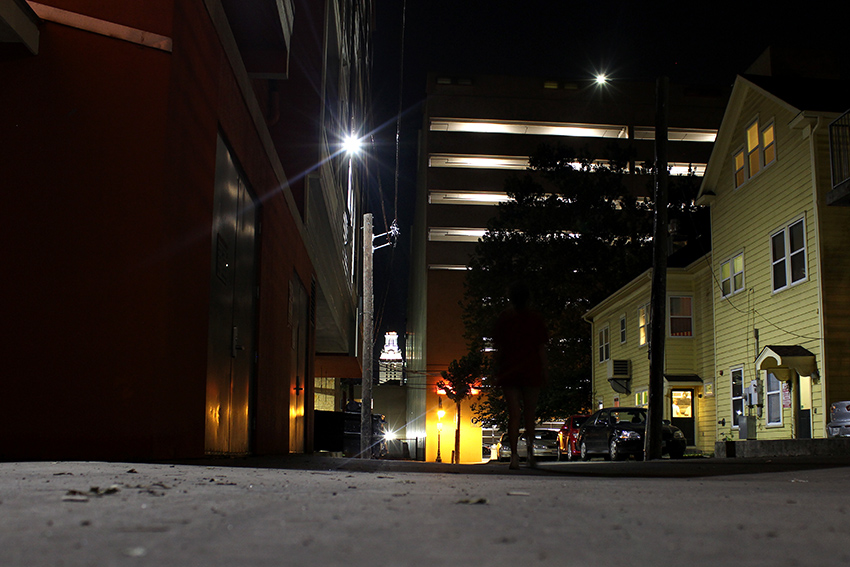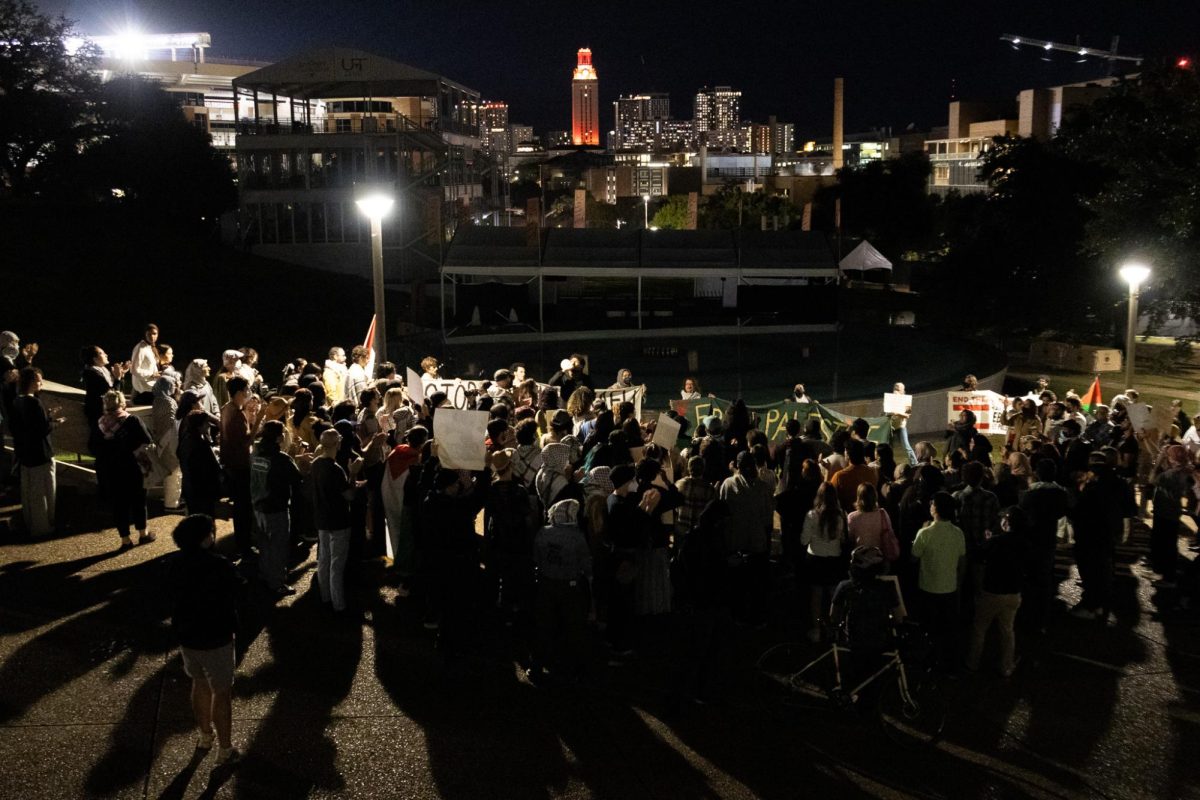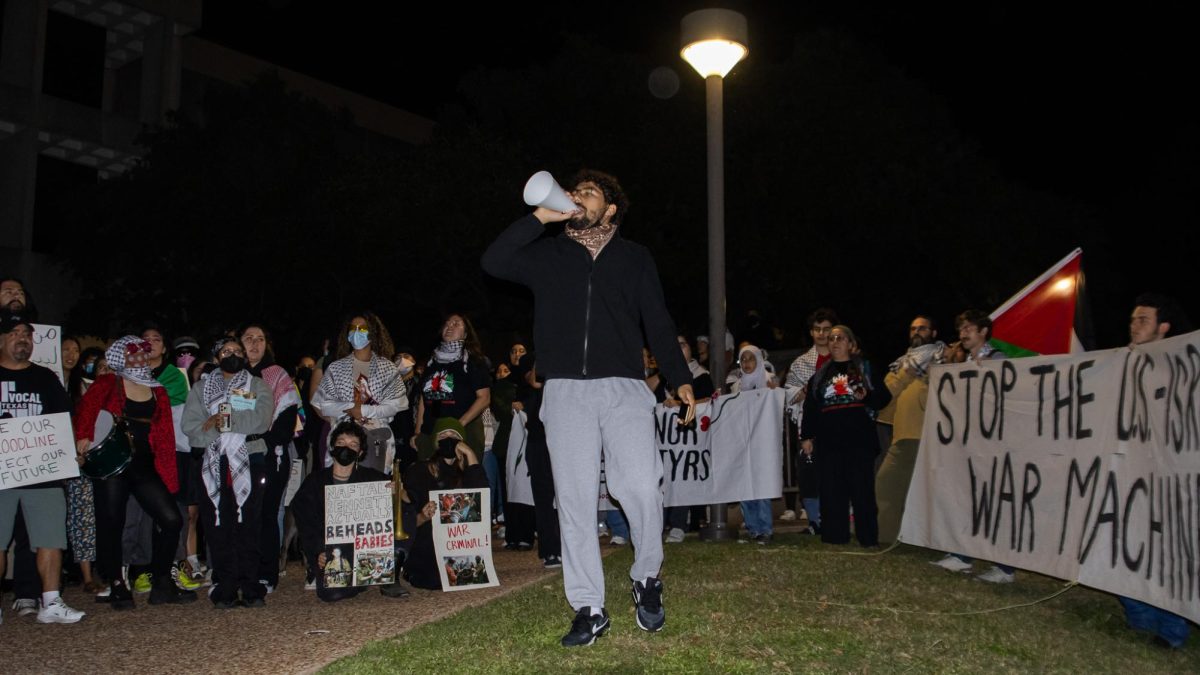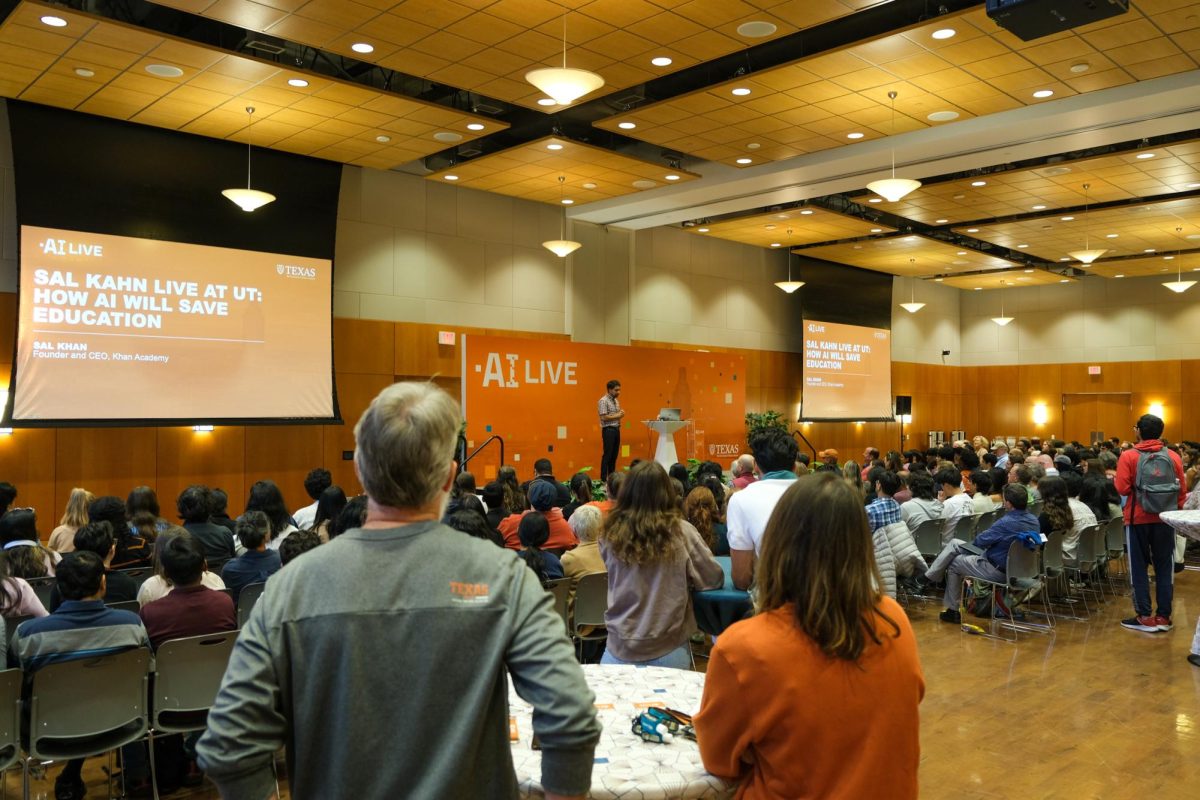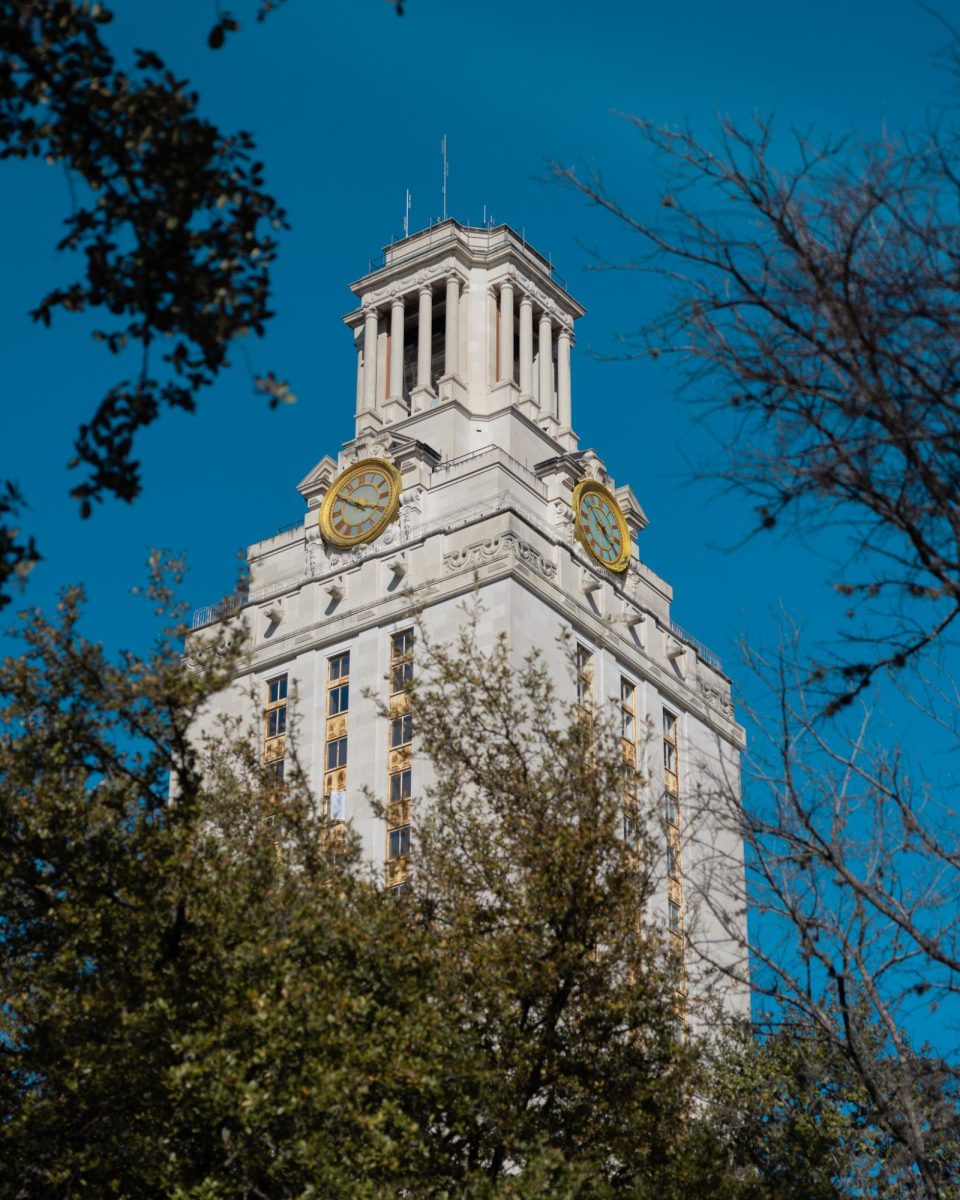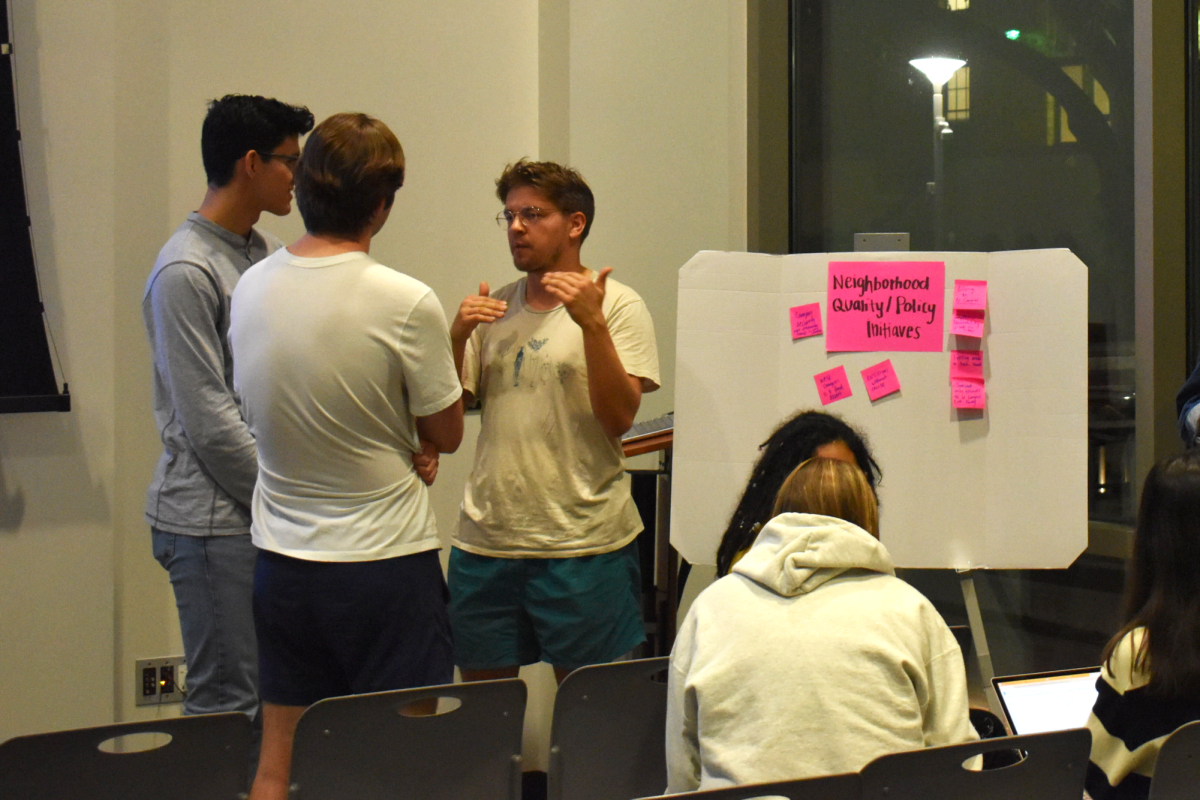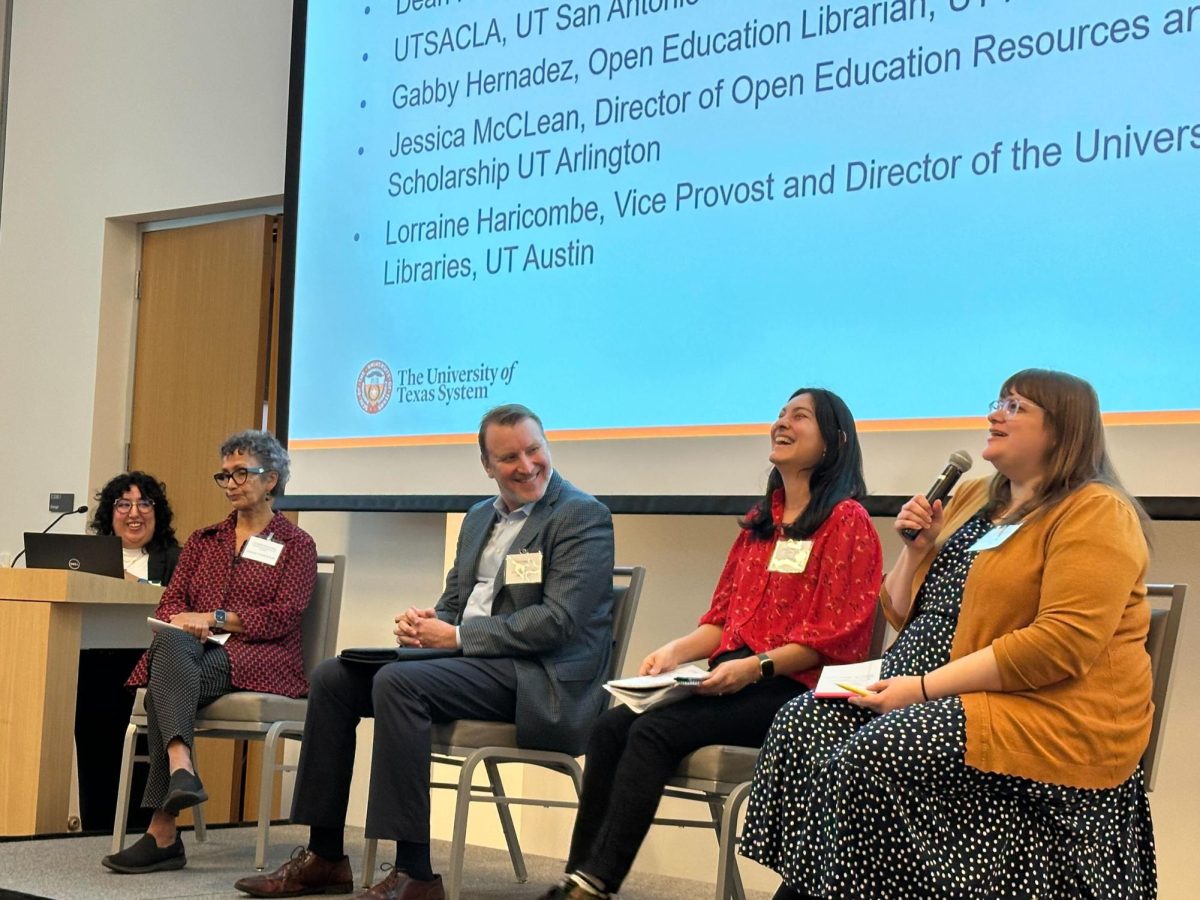As nutrition senior Lauren Sergeant walked around campus last Monday, she noticed street lights near Speedway were out and tweeted at UTPD. An hour later, after a series of phone calls and a quick tweet back, the lights came on.
This was one of the latest instances of the interaction between social media and law enforcement.
Cindy Posey, associate director of communications for University Operations, read the tweet and alerted the appropriate authorities.
“We tweeted immediately, and told her she was our hero,” Posey said. “That’s what we want people to do. We want to see every member of our community engaged in the community.”
Posey said UTPD’s social media presence makes the campus safer with their safety messaging but suggests people call 911 for an immediate police response.
“People private message me all the time on Facebook with leads and reporting incidents,” Posey said. “I don’t mind people doing that at all, I think it’s wonderful, in fact I encourage it, but we really encourage people to dial 911.”
Posey said they’ve also utilized social media in a case involving a man who has been exposing himself, using tweets about the incident to try to locate the person.
Undeclared sophomore Chris Wilson sees the potential for using social media with law enforcement and said students might not want to call 911 for every incident.
“People think if you’re calling 911 it’s very serious, and people are sometimes reluctant,” Wilson said. “I think social media could be useful, but if you actually wanted to talk to a police officer, obviously calling them would be better instead of trying to [direct message] them over Twitter or something.”
Austin Police Department Sgt. Alfred Trejo described the possible dangers of staying buried in a cell phone.
“We’ve had cases where someone’s been robbed, and they can’t give a description because they were on their cell phone texting, and next thing you know they get hit behind their head,” Trejo said. “Now they’re hitting the ground and someone is going through their pockets, and they’re running off, and they never saw them. They never saw that person because they never looked around.”
In the case of dimly lit areas of campus, cell phone use brought a quick solution to the problem.
According to a security assessment of UT’s campus by the Department of Public Safety in August, many areas of campus need better lighting.
Laurie Lentz, communications manager for University Operations Communications, said UT’s Facilities Services Department initiated monthly lighting maintenance checks for exterior campus lighting in April.
The department has completed about 900 preventive maintenance work orders so far, plus 100 repair work orders that corrected about 450 lights.
UT’s Facilities Services also worked to improve sustainability and visibility around Waller Creek this summer, and the removal of vegetation improved the performance of some lights that were partially obscured.

